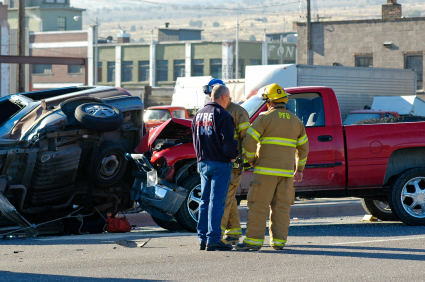Limited Insurance Proceeds
 I’ve had a few sad cases recently. In each case, my client was injured in an accident. In each accident, there were other people injured, as well. My clients went to the hospital, and were treated for their injuries. Neither of my clients had health insurance. Neither of them had UM/UIM insurance (neither of them drove a car, and neither lived with a family member who drove a car).
I’ve had a few sad cases recently. In each case, my client was injured in an accident. In each accident, there were other people injured, as well. My clients went to the hospital, and were treated for their injuries. Neither of my clients had health insurance. Neither of them had UM/UIM insurance (neither of them drove a car, and neither lived with a family member who drove a car).
After they finished medical treatment, we sent demand letters to the insurance companies. In each case, the adjuster informed us that they could not settle our claims because there were limited insurance proceeds available, and that other victims were either still treating or hadn’t submitted their demand packages, yet. The limited insurance proceeds were in compliance with the Maryland minimums–$30,000/$60,000. That means that the most any one person in an accident can recover is $30,000, with the total allowed for all people in a single accident as $60,000.
So, not wanting to wait, we filed lawsuits. Other victims of each collision did, as well (though not all). When it was time for the insurance company to answer the complaint in one case, and when their discovery responses were overdue in another, they cried “uncle.” They tendered policy limits in each, and washed their hands of the whole matter saying “you plaintiffs divide it up.”
So we did in one case (the other case we’re still working on). For the one that fully resolved, my client received something along the lines of 60% of her medical expenses. There were too many other victims, many of them with injuries far more serious than my client’s. We were able to get other medical expenses reduced, and thankfully there was Personal Injury Protection (PIP) available, so my client had a little bit of a take-home. But, it wasn’t what it should have been. And sadly, there was no other source of recovery–no UM/UIM, and no chance at recovering personal assets of the defendant driver.
So how do you divide up limited insurance proceeds with other claimants? It’s tough, because the process pits a plaintiff’s lawyer against other plaintiff’s lawyers, and we usually like to be on the same side. However, we must each zealously advocate for our clients. These are some considerations if you ever find yourself in the same boat:
- Perhaps the simplest way is for each automobile accident victim to get a pro rata share of the proceeds based on total medical expenses. So, if the total insurance available is $60,000, the total of all medical expenses is $100,000, and your client had $20,000 in medical expenses, your client would get total of $12,000. ($100,000/$20,000 = 20%; 20% x $60,000 = $12,000). This method has some appeal–it is completely objective, and there is no need to compare amounts of non-economic damages (pain, suffering, inconvenience, etc…).
- For cases that warrant the expense, a mediator or arbitrator (often a retired judge) can be brought in to help settle the matter.
- Another method is to allow the court to decide–everyone files a lawsuit, the cases are consolidated, the defendant admits liability, and the judge or jury decides what everyone gets. Or, the defendant could place the money into the court with an interpleader action, basically inviting all of the plaintiffs to come to court and fight it out.
- One particular consideration should be other means of recourse. Some accident victims may have UM/UIM insurance coverage available–meaning that they are more likely to be able to recoup their losses elsewhere. Lawyers who have access to other potential sources of recovery may be hesitant to take a discount on the first part of the case, though, until they have some assurance about what they can indeed recover from the UM/UIM insurance company.
In any event, everyone is going to end up with less than they deserve. This is one reason why it pays to have good UM/UIM insurance. We recommend everyone get as much as they reasonably can afford. The increase in premiums isn’t significant, and $100,000 is the bare minimum. We highly recommend more.
 Maryland Car Accident Lawyer Blog
Maryland Car Accident Lawyer Blog

